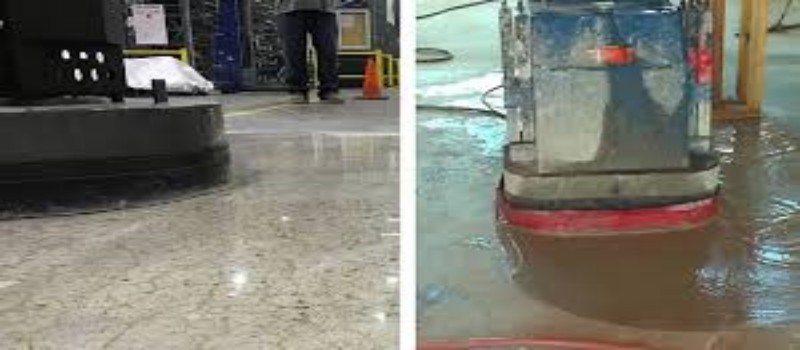Wet vs Dry Concrete Floor Polishing: Which is Better2023-06-29
Both wet and dry concrete floor polishing methods have their advantages and considerations. The choice between the two depends on various factors such as personal preference, project requirements, and environmental conditions.
Wet concrete floor polishing has three main advantages. Firstly, the presence of water helps in reducing airborne dust particles,making it cleaner option. Secondly, water acts as a coolant, preventing excessive heat buildup during the polishing process and extending the life of the diamond abrasives. Last but not least, the water can aid in improving the clarity and shine of polished concrete surface. However, there are some considerations in this method, wet polishing generates a slurry that needs proper containment and disposal to avoid environment concerns. In addition, the excess moisture from wet polishing may require additional time for the floor to completely dry before it can be sealed or used.

Unlike wet polishing, which requires ample drying time, dry concrete floor polishing significantly reduces turnaround time. Once the polishing process is complete, the floor can be immediately used without having to wait for the concrete to dry completely. Besides, dry concrete floor polishing involves the use of diamond polishing pads that effectively grind away imperfections and create a dense, polished surface. This results in a highly durable floor that resists stains, abrasions, and impacts, ensuring a longer lifespan compared to traditional flooring options. Nevertheless, without the cooling effect of water, the diamond abrasives may generate more heat during the polishing process. This can potentially reduce their lifespan.
Ultimately, the choice between wet and dry concrete floor polishing depends on your specific requirements and constraints. Some contractors may prefer wet polishing for its improved dust control and enhanced clarity, while others may opt for dry polishing due to faster turnaround time and reduced cleanup.
- Company Info
- Feedback
- Customer Reviews
- About Us
- Contact Us
- Blog
- Help Center
- User Center
- Forget Password
- My Orders
- Tracking Order
- My Account
- Register



